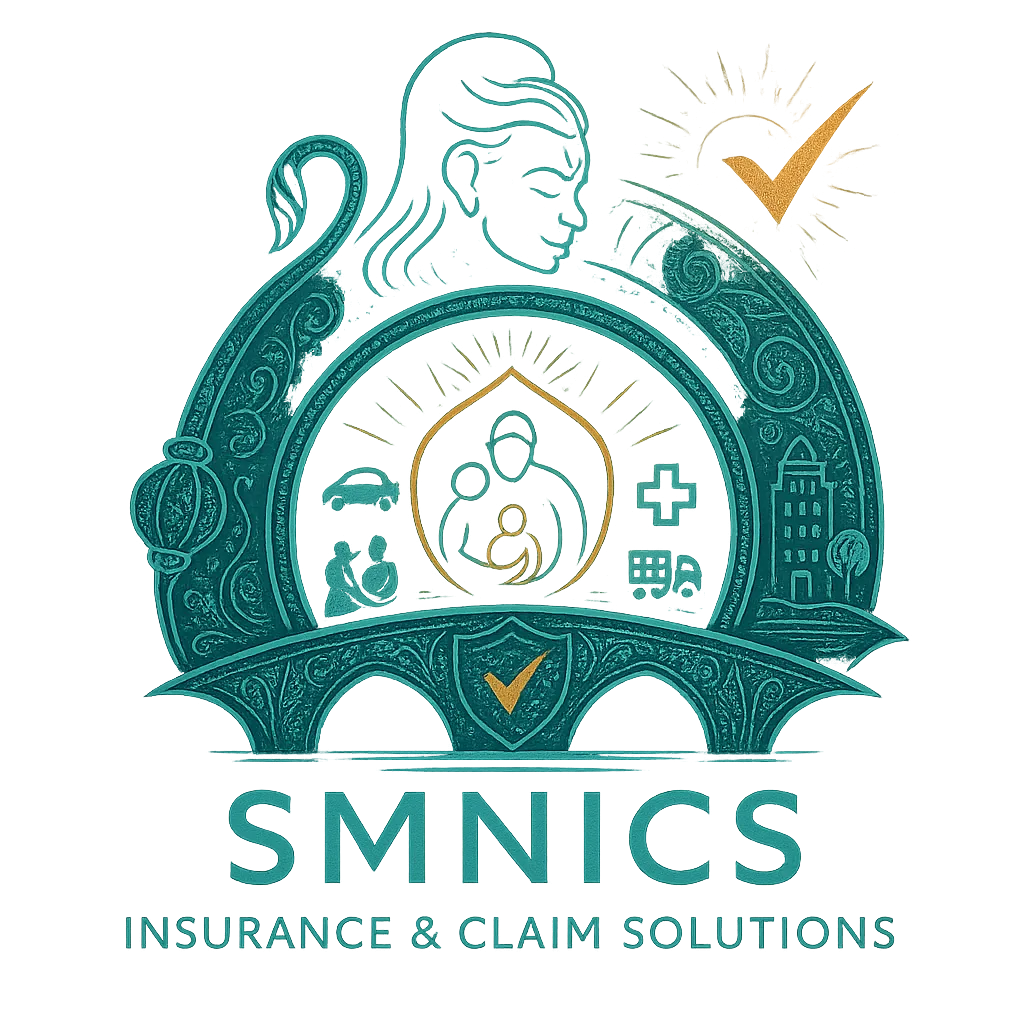
Ramesh stared at the WhatsApp message from his freight forwarder in Mumbai port. “Container damaged in storm. 500 cartons of electronics ruined. Sorry sir.”
His heart sank. Six months of planning, ₹12 lakhs worth of imported goods for his electronics store in Ahmedabad, and his Diwali season dreams—all potentially washed away by a cyclone off the Gujarat coast.
Then he remembered the marine insurance policy his CA had insisted on. “Just ₹8,000 premium,” she’d said. “Trust me, you’ll thank me later.”
As he dialed the insurance company’s claim helpline, Ramesh realized this wasn’t just about money. It was about whether his business would survive its first major setback.
If you’re an importer, exporter, or anyone moving goods across borders—or even within India—you’ve probably felt that familiar knot in your stomach when your cargo is out of sight. What if something happens? What if it gets stolen? What if the ship sinks?
These aren’t just paranoid thoughts. They’re real business risks that can destroy years of hard work in a single incident.
What Marine Insurance Actually Protects You From
Marine insurance isn’t just about ships anymore. Despite the name, it covers goods traveling by sea, air, road, rail, or inland waterways. Think of it as travel insurance for your cargo—whether it’s crossing oceans or crossing states.
Here’s what you’re really protecting against:
- Natural disasters that can strike without warning—cyclones off the coast of Chennai, floods in Mumbai ports, earthquakes affecting inland transportation.
- Theft and piracy, which unfortunately remain real concerns on certain shipping routes and even during inland transit.
- Accidents during handling—goods falling off trucks, crane mishaps at ports, or damage during loading and unloading.
- Fire or explosion on ships, in warehouses, or during transit.
- Collision and capsizing of vessels, which can send entire shipments to the ocean floor.
- Third-party liabilities if your cargo causes damage to someone else’s property or injures people.
The scope is broader than you might think. Modern marine insurance in India covers your goods from the moment they leave your warehouse until they reach their destination—truly door-to-door protection.
The Types of Marine Insurance You Need to Know
Not all marine insurance policies are the same. Your needs depend on what you’re shipping, how you’re shipping it, and what risks you’re most worried about.
Hull Insurance: For Ship Owners
If you own vessels—whether cargo ships, fishing boats, or passenger ferries—hull insurance protects your most valuable asset. It covers physical damage to the vessel itself from accidents, fires, storms, or collisions.
Think of it like comprehensive car insurance for your ship. If your vessel gets damaged, hull insurance covers repair costs or, in worst cases, the total loss value.
Cargo Insurance: The Most Common Choice
This is what most Indian businesses need. Cargo insurance protects your goods during transit, regardless of the transport mode. Whether you’re importing raw materials from China or exporting textiles to Europe, cargo insurance is your safety net.
The beauty of modern cargo insurance is its flexibility. You can choose:
- Specific voyage policies for one-time shipments
- Open cover policies for regular exporters and importers
- Floating policies when you have frequent but unpredictable shipments
Freight Insurance: Protecting Your Revenue
If you’re a shipping company or logistics provider, freight insurance protects your revenue when cargo gets damaged or lost. Even if the goods belong to someone else, you still lose freight charges when shipments don’t reach their destination.
Liability Insurance: When Things Go Wrong
What if your cargo causes environmental damage? What if someone gets injured because of your shipment? Liability insurance protects you from third-party claims that can otherwise bankrupt your business.
Oil spills, chemical leaks, or cargo falling and injuring people—these scenarios can result in crores of rupees in legal liabilities.
Specialized Coverages for India
- Inland Transit Insurance: Perfect for goods moving within India by road, rail, or inland waterways. Whether you’re shipping from Mumbai to Delhi or from Kolkata to Guwahati, this covers the journey.
- Multimodal Coverage: Your goods travel by ship from Shanghai, get transferred to trucks in Mumbai, then move by rail to your warehouse in Jaipur. One policy covers the entire journey.
The Marine Insurance Act: Your Legal Backbone
The Marine Insurance Act, 1963 isn’t just legal jargon—it’s your protection as a policyholder. This law ensures that insurance companies can’t arbitrarily deny valid claims or hide behind complicated terms.
The Act operates on four fundamental principles:
- Utmost Good Faith: Both you and your insurer must be completely honest. You must disclose all material facts about your cargo and routes. They must clearly explain policy terms.
- Indemnity: You get compensated for actual losses, not imaginary ones. If your ₹5 lakh shipment gets damaged and repair costs ₹1 lakh, you get ₹1 lakh—not more, not less.
- Insurable Interest: You must have a financial stake in what you’re insuring. You can’t insure someone else’s cargo hoping to profit from its loss.
- Proximate Cause: Claims are settled based on the direct cause of loss. If your goods get damaged because of poor packaging (excluded), you can’t claim. If they get damaged in a storm (covered), you can.
These principles protect both sides and ensure fair treatment.
What’s Actually Covered (And What’s Not)
Here’s where many businesses get surprised during claim time. Understanding coverage is crucial for making informed decisions.
Covered Perils
- Perils of the sea: Storms, lightning, tsunamis, rough weather that damages cargo or vessels.
- Fire and explosion: Whether on the ship, in the port, or during inland transit.
- Theft and piracy: Unfortunately still relevant on certain routes and during inland transport.
- Accidents: Collision, capsizing, derailment, or accidents during loading/unloading.
- General average sacrifices: When part of the cargo is sacrificed to save the ship and remaining cargo.
- Third-party liabilities: Legal claims against you for property damage or injury caused by your cargo.
Common Exclusions (Read This Carefully)
- Inherent defects: If your goods naturally deteriorate (like fruits rotting), that’s not covered unless specifically included.
- Poor packaging: Inadequate packing leading to damage is typically excluded.
- Normal wear and tear: Natural depreciation during long journeys.
- Deliberate damage: Fraudulent claims or intentional damage by the insured.
- War and nuclear risks: Usually excluded unless specifically covered through additional riders.
- Delays: Losses due to delayed shipments affecting market value are generally not covered.
- Ordinary leakage: Some loss through natural leakage or evaporation is expected and excluded.
“Insurance is an expense until you need it. Then it becomes the best investment you ever made.”
The Real Benefits: Why Indian Businesses Need Marine Insurance
- Financial Security: The obvious benefit. When your ₹10 lakh shipment gets damaged, insurance ensures you don’t bear the entire loss. Your business survives to ship another day.
- Risk Transfer: Instead of lying awake worrying about storms in the Arabian Sea or port strikes in Chennai, you transfer that risk to professionals who understand it better.
- Trade Facilitation: Many international buyers require insurance certificates before releasing payments. It builds confidence in business relationships.
- Legal Compliance: Certain trade agreements and financing arrangements mandate insurance coverage. Without it, you might lose business opportunities.
- Cash Flow Protection: Instead of sudden huge losses disrupting your cash flow, you pay predictable small premiums and get coverage when needed.
- Business Continuity: When accidents happen, insurance helps you recover quickly and continue operations rather than struggling to rebuild from scratch.
Choosing the Right Marine Insurance Policy
Not all policies are created equal. Here’s how to pick coverage that actually protects your business:
Assess Your Cargo and Routes
- High-value or fragile goods need higher coverage limits and special handling clauses.
- Perishable items require time-sensitive claim settlement and may need special temperature-controlled transport coverage.
- Hazardous materials face higher premiums but need comprehensive liability coverage.
- Trade routes matter enormously. Shipping through piracy-prone areas or cyclone-prone seasons affects coverage and costs.
Understanding Coverage Options
Institute Cargo Clauses (ICC): These standardized terms define coverage levels:
- ICC (A): Broadest coverage, protects against all risks except specific exclusions
- ICC (B): Medium coverage, includes fire, explosion, vessel accident, and general average
- ICC (C): Narrow coverage, only major perils like fire, explosion, and vessel accidents
Warehouse to Warehouse: Coverage from origin warehouse to destination warehouse, including intermediate storage.
CIF/CIP Terms: When you’re buying goods, ensure the seller arranges adequate insurance as part of the price.
Premium Factors You Can Control
- Packaging standards: Better packaging reduces claims and can lower premiums over time.
- Route selection: Choosing safer, though perhaps longer routes can reduce insurance costs.
- Seasonal timing: Avoiding cyclone seasons or peak piracy periods affects pricing.
- Claims history: Clean records over 2-3 years can qualify you for no-claim bonuses.
The Claims Process: When Disaster Strikes
Knowing how to claim is as important as having coverage. Here’s what actually happens:
Immediate Actions (First 24 Hours)
- Notify immediately: Inform your insurance company within 24-48 hours of discovering damage or loss.
- Preserve evidence: Take photos, save damaged packaging, collect witness statements.
- Minimize further loss: Take reasonable steps to prevent additional damage—this is actually required by your policy.
- Get surveys done: For significant losses, independent surveyors will assess damage and determine causes.
Documentation You’ll Need
- Policy documents: Original policy certificate and coverage details.
- Commercial documents: Purchase invoices, packing lists, shipping documents, bills of lading.
- Evidence of loss: Survey reports, photos, correspondence with carriers or port authorities.
- Repair estimates: For repairable damage, get quotations from authorized repair facilities.
Settlement Timeline
- Small claims (under ₹1 lakh): Often settled within 15-30 days with proper documentation.
- Complex claims: May take 60-90 days, especially if surveys or investigations are required.
- Disputed claims: Can extend to 6 months or more, but most genuine claims settle much faster. The key is cooperation and proper documentation from day one.
Common Mistakes That Cost Indian Businesses
- Under-insuring: Insuring for ₹5 lakhs when your goods are worth ₹8 lakhs means you’ll only get partial compensation even for total loss.
- Ignoring policy terms: Not reading the fine print about exclusions, territorial limits, or notification requirements.
- Poor record-keeping: Unable to prove the value or condition of goods at the time of shipment.
- Delayed notification: Informing the insurance company weeks after discovering damage can void your claim.
- Wrong coverage type: Choosing ICC (C) when your goods need ICC (A) protection leaves dangerous gaps.
- Trusting verbal assurances: Always get policy terms in writing; verbal promises from agents don’t count.
The Digital Revolution in Marine Insurance
Marine insurance in India is modernizing rapidly. Digital platforms now allow:
- Instant quotes: Upload your shipment details and get quotes within minutes.
- Online policy issuance: Buy coverage without visiting offices or handling paperwork.
- Real-time tracking: Monitor your shipments and get alerts about weather conditions or route changes.
- Digital claims: Submit claims online with photo evidence and track settlement status.
- Risk assessment tools: Use AI-powered platforms to assess route risks and optimize coverage.
This makes marine insurance more accessible for small and medium businesses who previously found the process too complex.
Industry-Specific Considerations
- Textiles and Garments: Vulnerable to water damage and contamination. Need coverage for fashion seasons and style changes.
- Electronics: Require protection against moisture, theft, and handling damage. Higher value means higher coverage limits.
- Chemicals and Pharmaceuticals: Need liability coverage for environmental damage and special handling requirements.
- Perishables: Time-sensitive coverage with clear temperature and humidity requirements.
- Automotive Parts: Protection against precise fitting requirements and quality standards.
- Machinery: Heavy equipment needs specialized handling and installation coverage. Each industry has unique risks that standard policies might not fully address.
The Economics: Investment vs. Protection
“Is marine insurance worth the cost?” That’s the wrong question. The right question is: “Can my business survive without it?”
Consider these numbers: Marine insurance typically costs 0.1% to 0.5% of cargo value for standard routes and goods. So for a ₹10 lakh shipment, you might pay ₹1,000 to ₹5,000 in premium.
Compare that to losing the entire ₹10 lakh shipment. Or facing a ₹50 lakh liability claim if your cargo causes environmental damage.
The math is simple. The peace of mind is priceless.
Building Your Marine Insurance Strategy
- Start small: If you’re new to international trade, begin with specific voyage policies to understand how coverage works.
- Scale up: As your business grows, move to open cover or floating policies for better rates and convenience.
- Review annually: Your business changes, routes change, risks change. Annual policy reviews ensure continued adequate protection.
- Build relationships: Work with insurers who understand your industry and can provide guidance beyond just selling policies.
- Invest in risk management: Better packaging, safer routes, and proper documentation can reduce both risks and premiums over time.
Marine insurance isn’t just about covering losses—it’s about enabling growth. When you know your cargo is protected, you can take on bigger orders, explore new markets, and build your business with confidence.
Whether you’re shipping your first container from Mumbai to Dubai or managing complex supply chains across multiple continents, marine insurance transforms uncertainty into manageable risk.
Your competitors might cut corners and hope for the best. But you can choose to be prepared. You can choose to sleep well knowing that your business—and your family’s future—isn’t at the mercy of storms at sea or accidents on distant highways.
Because in business, as in life, it’s not about avoiding all risks. It’s about managing them wisely.
Ready to protect your cargo and your business? Get personalized marine insurance quotes that match your specific trade routes and cargo types. Because your goods deserve safe passage, and your business deserves certainty.
Written by the SMNICS advisory team, helping Indian exporters, importers, and logistics companies navigate marine insurance with confidence. We’ve guided over 1,500 businesses in choosing appropriate coverage for their specific trade requirements.


